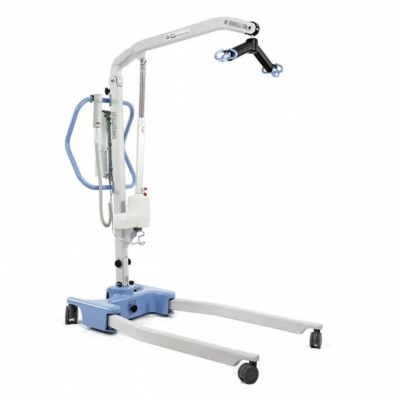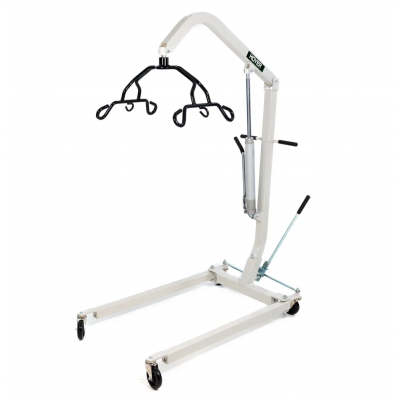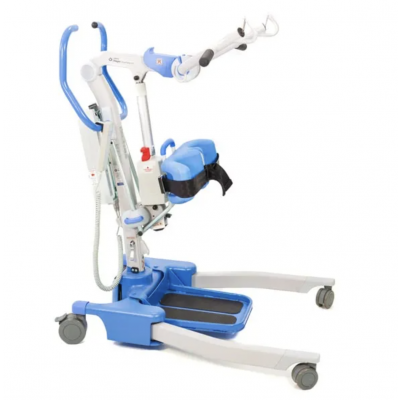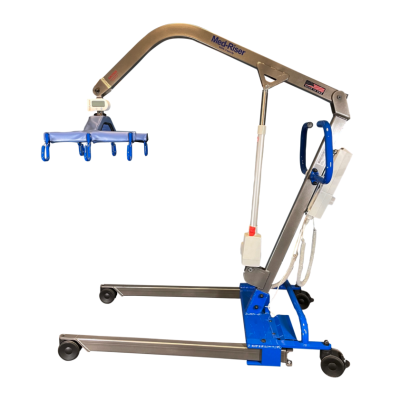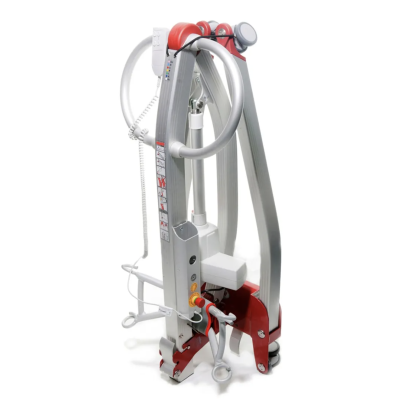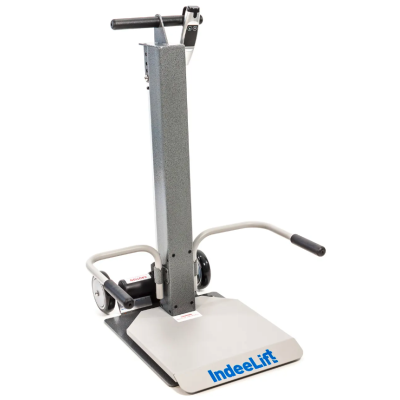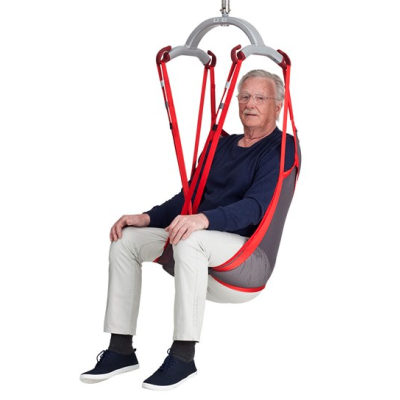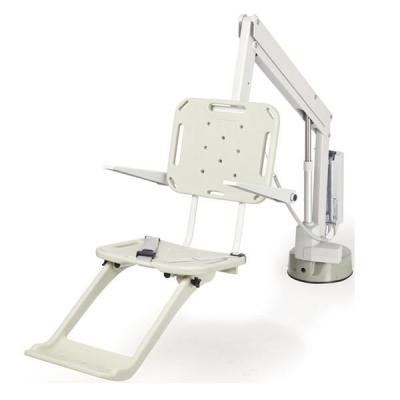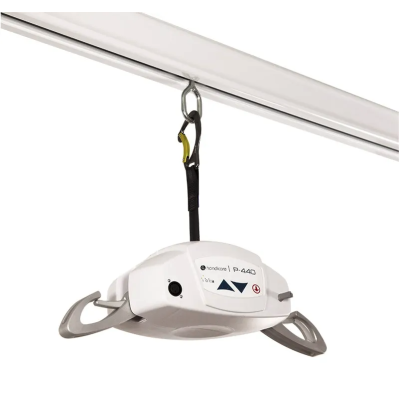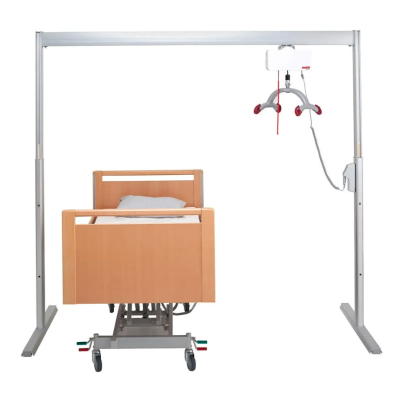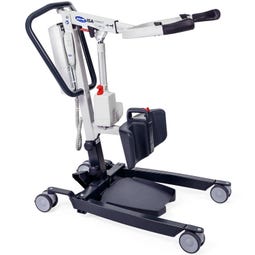 ISA Compact Stand-Up Lift
ISA Compact Stand-Up Lift- Extendable lifting arm adjusts to nine different lengths to accommodate a variety of users
- Lower leg cushion provides six height positions with ErgoSupport swivel feature for added comfort
- Foot pedal base operation allows the use of body weight to widen the base and limit upper body strain
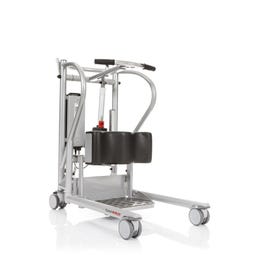 MiniLift200 Mobile Sit-to- Stand Lift
MiniLift200 Mobile Sit-to- Stand Lift- Unique solution – extremely comfortable, active sit-to-stand with natural movement patterns
- Small and convenient
- Easy to maneuver
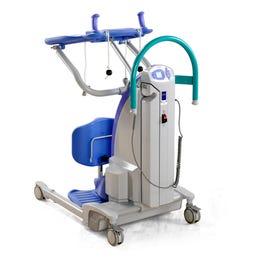 Sara Plus Power Standing Lift
Sara Plus Power Standing Lift- The unique Arc-Rest provides exceptional upper body support during the raising action
- The first-step system, incorporating the Proactive Pad™ and a detachable footplate, enables a range of training exercises directly on the floor
- Options include a built-in electronic scale, a commode seat and leg straps
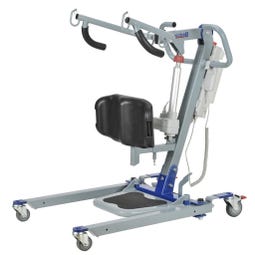 ProCare BestStand SA600 Sit-to-Stand Lift
ProCare BestStand SA600 Sit-to-Stand Lift- Dual 3" front casters provide low base height of 4.7"
- Adjustable knee pad unit is wider to fit more patients
- Low base height provides maximum stability and fits under lower beds
 Protekt® 600 Sit-to-Stand Patient Lift
Protekt® 600 Sit-to-Stand Patient Lift- 6 sling hooks allows for multiple sling options, safer patient handling and a wider range of transfers.
- Ergonomically designed foot pedal offers hands free opening of base.
- Dual rear locking casters.
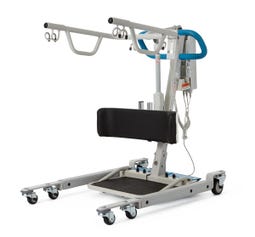 MDS500 HD Power Based Sit-to-Stand Lift
MDS500 HD Power Based Sit-to-Stand Lift- This sit to stand lift features fast actuator speeds for safe and efficient lifting
- Low profile base legs slide easily under furniture
- Easy-to-use, battery-operated base spreader
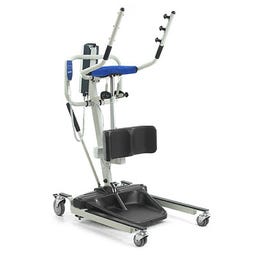 Reliant RPS350 Sit-to-Stand Lift
Reliant RPS350 Sit-to-Stand Lift- Base adjustments made manually
- Legs secure in three positions for comfortable use at any height
- Fast simple sling attachment
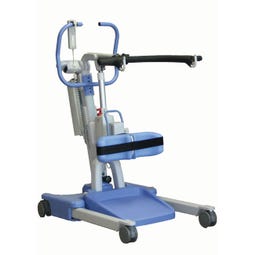 Hoyer® Professional Elevate Lift
Hoyer® Professional Elevate Lift- One hand, infinitely adjustable kneepad
- Mutl-configuration safety belt
- Angled, removable and easy-clean foot tray
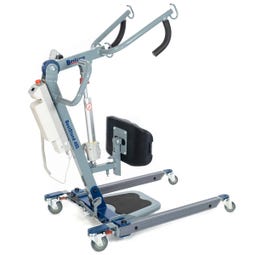 BestStand Stella Sit-to-Stand Lift
BestStand Stella Sit-to-Stand Lift- Wide lifting range
- Adjustable knee pad
- Compact base for easy maneuver
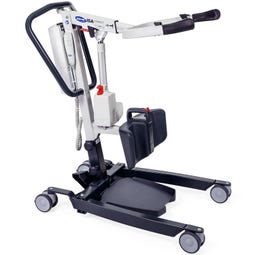 ISA XPlus HD Stand-Up Lift
ISA XPlus HD Stand-Up Lift- Extendable lifting arm adjusts to nine different lengths to accommodate a variety of users
- Lower leg cushion provides six height positions with ErgoSupport swivel feature for added comfort
- Foot pedal base operation allows the use of body weight to widen the base and limit upper body strain
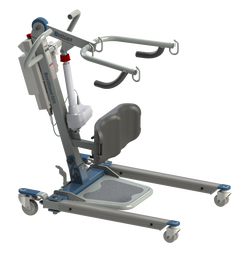 ProCare BestStand SA500 Sit-to-Stand Lift
ProCare BestStand SA500 Sit-to-Stand Lift- Warning beep for low battery charge and weight capacity levels
- Large ergonomic handles for patient/caregiver comfort and security
- Unique foot pedal base opening for wheelchair/commode access
 QuickMove Sit-to-Stand Transfer Aid
QuickMove Sit-to-Stand Transfer Aid- Small and convenient
- Stimulates a natural movement pattern
- Adjustable buttock cushions that can be angled
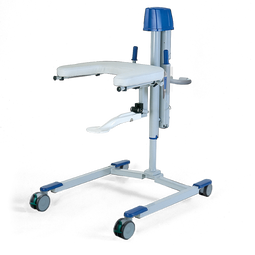 Hi Low Sit to Stand Patient Lift Walker
Hi Low Sit to Stand Patient Lift Walker- Detachable Spade seat, used for lifting the client
- Straight steering, to facilitate transportation in the corridor
- Safety straps for body weight reduction and to ensure client safety
What is a Sit-to-Stand Patient Lift?
Sit-to-Stand, or stand assist lifts, are a great solution for partially weight-bearing patients who have some mobility but require a helping hand.
These stand aids provide extra support as patients lift themselves to a standing position for transfer. Once on the lift, the caregiver can maneuver the patient to a chosen destination. These lifts are an ideal solution for patients who are:
- Able to sit up unassisted
- Partially weight-bearing
- Able to physically hold onto a lift
- Able to bend their ankles, knees, and hips
Sit-to-Stand lifts help patients gradually develop muscle strength over time, making them a great tool for rehabilitative settings. Patients take an active role in the transfer, increasing a sense of accomplishment and self-sufficiency.
They also simplify the transfer process between seated surfaces: rather than transferring from a lift, to wheelchair, to lift, the Sit-to-Stand lift can bring patients directly from their bed to the toilet (for example) without needing multiple pieces of equipment.
What Should I Consider When Purchasing a Sit-to-Stand Lift?
Manual vs Powered
Sit-to-Stand lifts can be operated manually or through a powered system. Manual lifts are generally more affordable and lightweight, operated with a simple hydraulic system. Powered lifts further reduce strain on caregivers, allowing them to use the lift with the push of a button. However, powered lifts can be more expensive and use batteries that must be recharged.
Slings
Many lifts come with slings that can be wrapped around the patient’s chest for additional support during transfer. This is especially helpful during the early stages of recovery when extra stability is needed.
Weight Capacity
What weight would you like your lift to accommodate? Most Sit-to-Stand lifts can bear up to 400+ lbs, but heavy-duty models are also available for bariatric patients.
Add-ons
Many lifts come with helpful add-ons and features to make transfers easier. These can include weight capacity alerts, a maintenance monitoring system, or even obstruction sensors that break the lift if an object or caregiver is in the way.
Not sure if a Sit-to-Stand lift is right for you? Contact our team of product specialists and we’d be happy to help!
